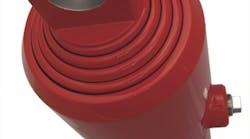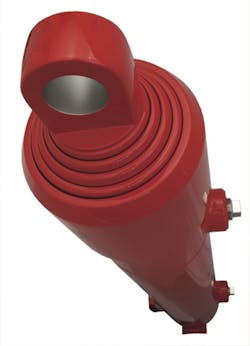Single-acing telescopic cylinders feature proprietary machined hard stop for reliable stopping at the end of every stroke. The cylinders require less fluid than others of its class, which leads to faster cycle times and can lift more loads using the same pressure. Standard bores are 5 to 8 in., strokes from 84 to 285 in.3, to 5 stages, and 1 in. NPT porting with SAE-ORB porting standard. Available in self-bleeding design, increased stage overlap provides stability and support, chrome plated final stage, and double lip polurethane wiper.
Munice Power Products, (800) 367-7867, www.munciepower.com


